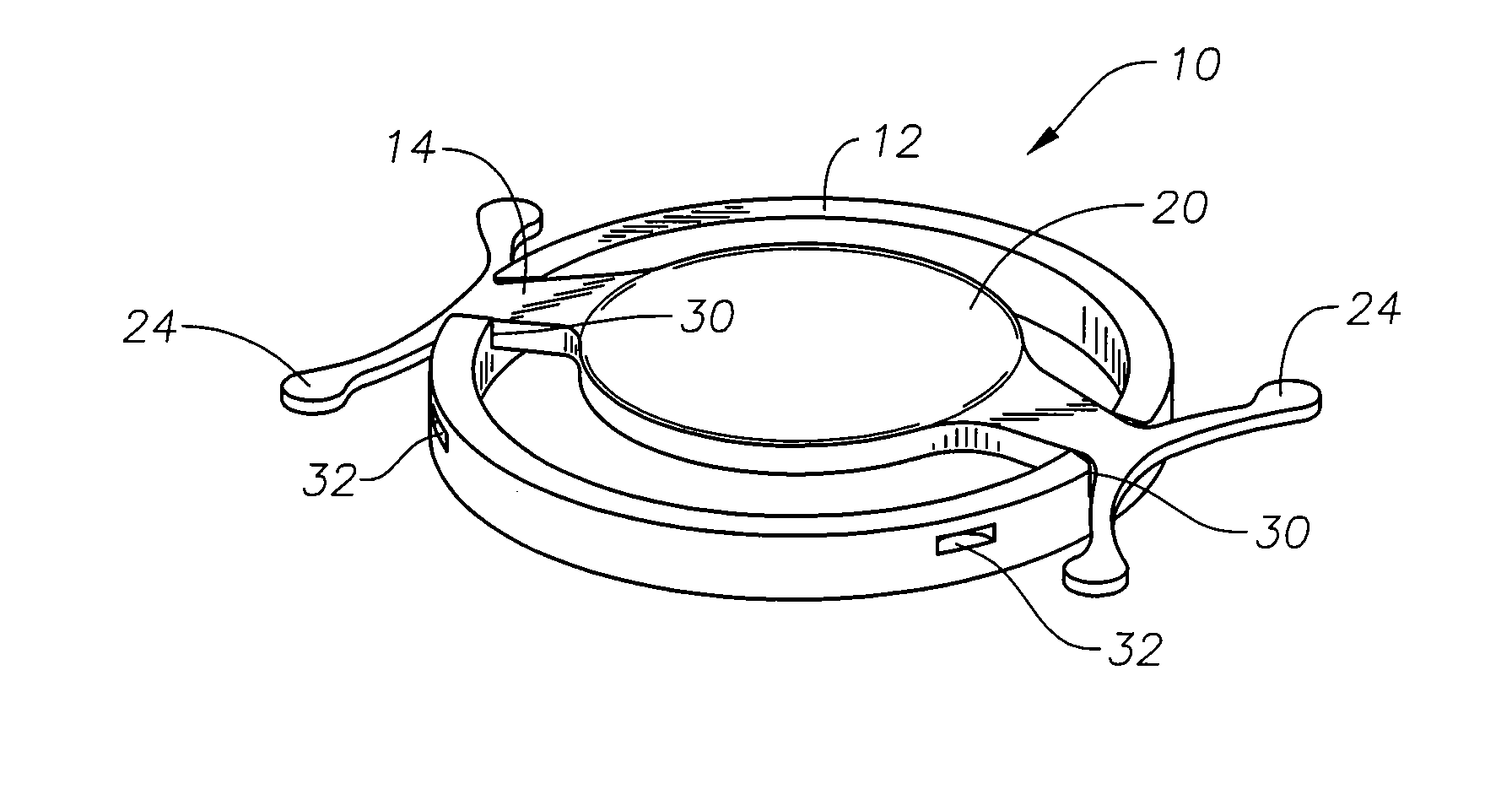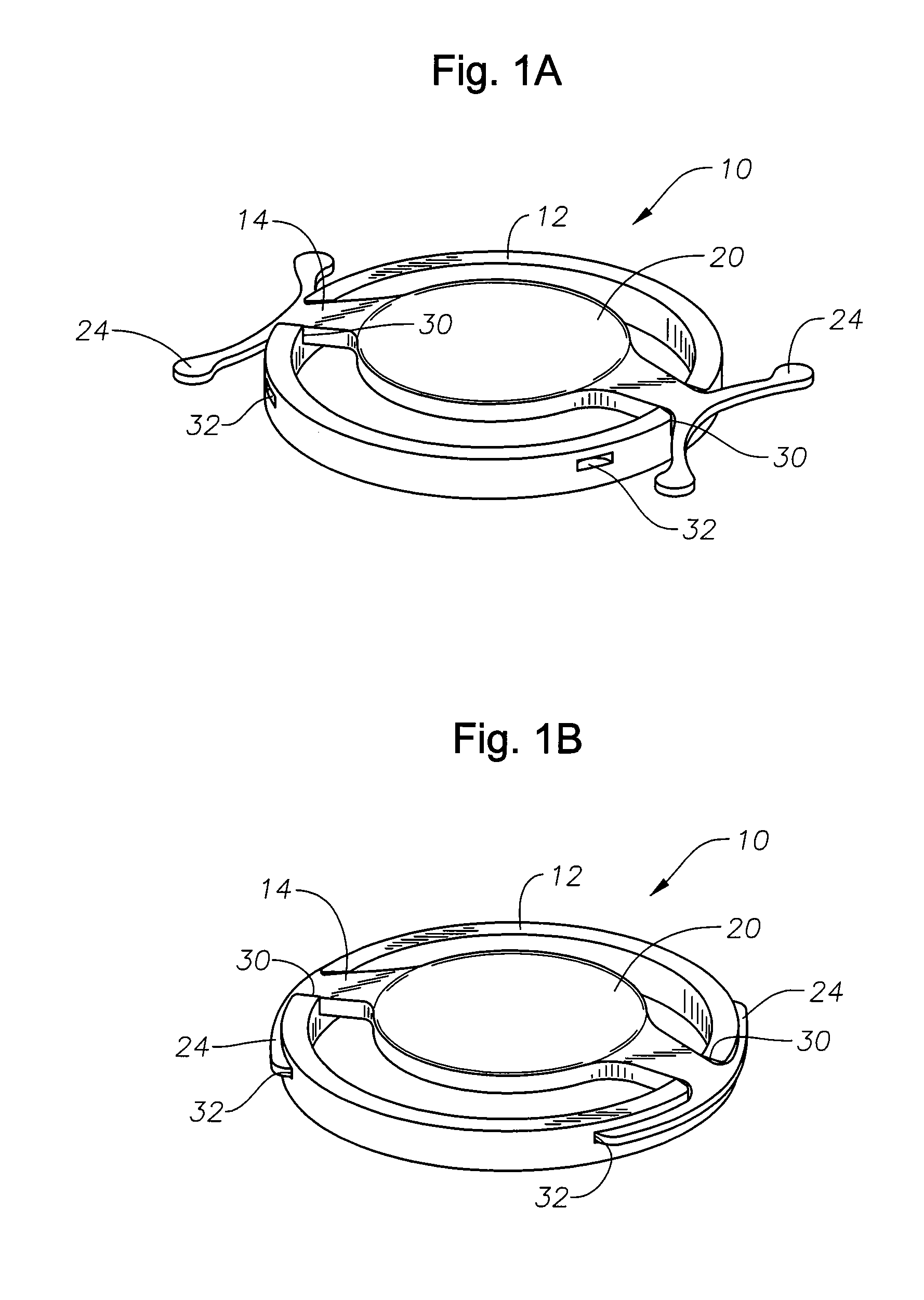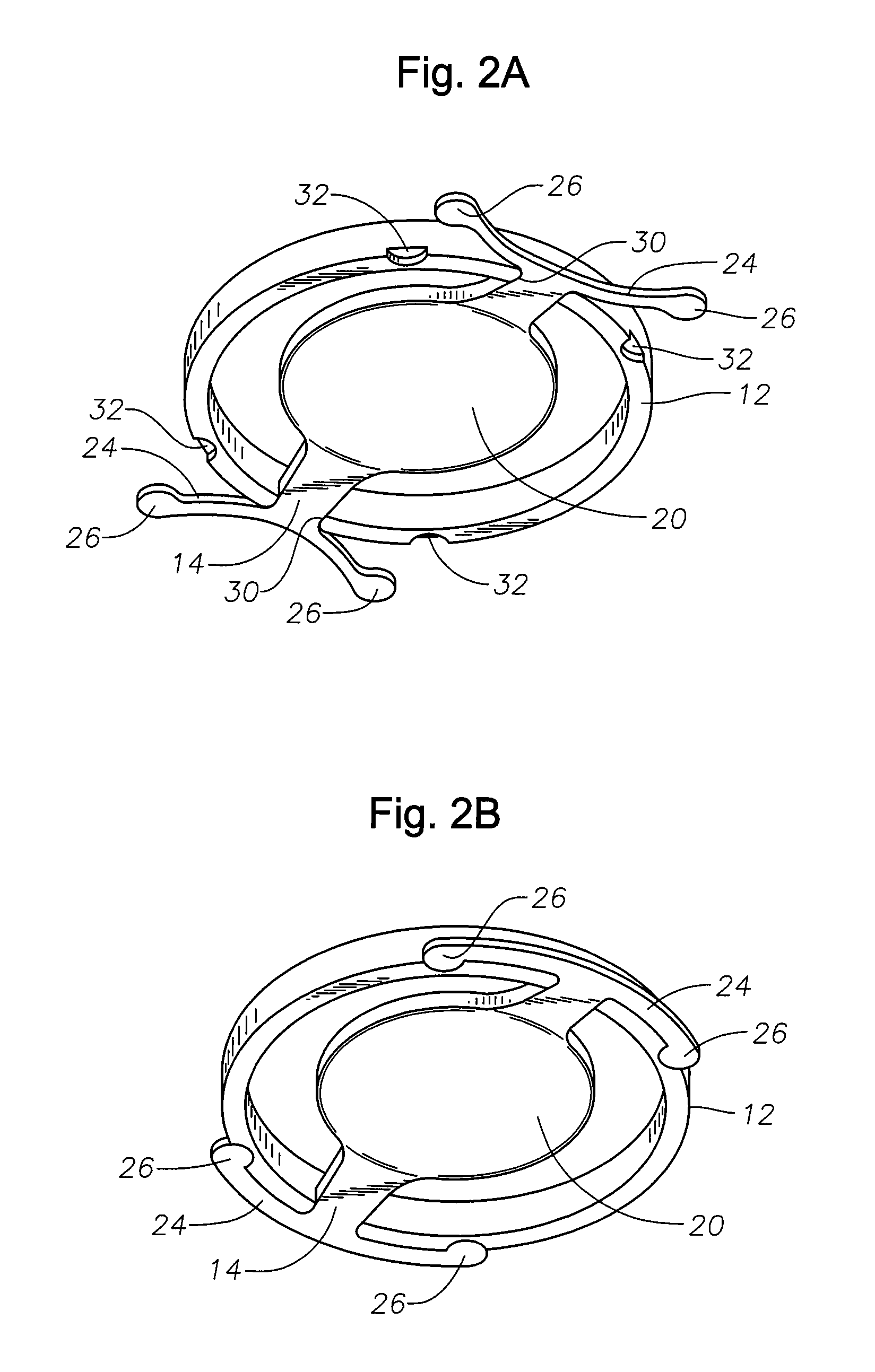Single optic accommodative intraocular lens system
a single optic and lens technology, applied in intraocular lenses, prostheses, medical science, etc., can solve the problems of deteriorating vision, increasing natural lens tending to flatten, so as to improve the range of accommodative power, extend the depth of focus, and restore the effect of accommodation
- Summary
- Abstract
- Description
- Claims
- Application Information
AI Technical Summary
Benefits of technology
Problems solved by technology
Method used
Image
Examples
Embodiment Construction
[0028]As best seen in the FIGUREs, lens system 10 of the present invention generally consists of capsular ring 12 and IOL 14. IOL 14 comprises an optic 20 and a plurality of haptics 24. Ring 12 and IOL 14 are preferably made from a soft, foldable material that is resistive to the formation of PCO, such as a soft acrylic, or a hydrogel or silicone. Optic 20 can be a monofocal or multifocal optical element having any suitable negative or positive power. Ring 12 can be located posteriorly or anteriorly to IOL 14. Haptics 24 can be used to size the lens system 10 over a range of capsular bag sizes. IOL 14 (optic 20) can move along the optical axis of an eye in which it is implanted in response to dynamic capsular forces resulting from movement of the ciliary muscle.
[0029]Capsular ring 12 further comprises interlock features designed to couple capsular ring 12 to IOL 14. These features can comprise notches 30 in the anterior surface of capsular ring 12 as shown in FIGS. 1A and 1B, notche...
PUM
 Login to View More
Login to View More Abstract
Description
Claims
Application Information
 Login to View More
Login to View More - R&D
- Intellectual Property
- Life Sciences
- Materials
- Tech Scout
- Unparalleled Data Quality
- Higher Quality Content
- 60% Fewer Hallucinations
Browse by: Latest US Patents, China's latest patents, Technical Efficacy Thesaurus, Application Domain, Technology Topic, Popular Technical Reports.
© 2025 PatSnap. All rights reserved.Legal|Privacy policy|Modern Slavery Act Transparency Statement|Sitemap|About US| Contact US: help@patsnap.com



